A Conversation With Ry Russo-Young (YOU WON’T MISS ME)
[NOTE: Now that You Won’t Miss Me is available in an excellent Limited Edition DVD/Vinyl package thanks to Factory 25, we wanted to make sure you read this conversation if you haven’t already!]
As you can tell from the opening remarks below, this conversation took place (and was first posted) almost two years ago during the 2009 Sundance Film Festival, where Ry Russo-Young’s thoroughly invigorating You Won’t Miss Me world premiered in the Frontiers section. While it’s taken some time for Russo-Young to figure out a distribution path she’s happy with, You Won’t Miss Me is ready to make its theatrical bow at Cinema Village in New York City on December 10, 2010.
You Won’t Miss Me features a tour-de-force performance by Stella Schnabel, who plays Shelly Brown, an early 20-something who has just been released from psychiatric care to return to life in downtown New York City. As Shelly bounces from encounter to encounter and goes through the motions of trying to be an actress, it becomes difficult to tell if she is truly on the brink of insanity or if she’s just an abnormally intense young person grappling with the troubles of early adulthood. Russo-Young’s mixed media approach further mimics Shelly’s hyper-intense mental state and turns an otherwise typical portrait into something artful, layered, and dynamic. It’s one of the year’s best independent films.
Hammer To Nail: A week ago, before heading to Sundance, we met up for a drink and you seemed nervous and excited and happy. How do you feel right now?
Ry Russo-Young: I feel much more comfortable. I feel acclimated to Sundance. I’d never been here before so I didn’t know exactly what to expect, I guess. And it’s also just, it’s really interesting to show the movie to people and to get reactions and gauge reactions in the theater and to talk to people after in the Q&As. We had three screenings, we have one more on Thursday, but having done it three times I feel good and comfortable and what I was hoping to communicate, people are receiving that in a way that feels very close to how I intended.
H2N: First off, I wanted to ask how many people did you show it to along the way?
RRY: About six months ago, I did a test screening, and I wasn’t sure if it was done, and so I gathered up about 45 people. And some I knew well, some were good friends of mine that I just trust ‘cause I think they’re smart and great. And then others were people I had just met or people that I told to bring a friend and I didn’t know. So I tried to get a pretty diverse audience and I played it for them. They were really, really positive about it and I felt like it was very close at that point. And then it was about tweaking and sitting away from it, getting responses. I asked everyone to email me. I didn’t have them fill out forms at the screening, which is sometimes done, but I said they could just email me or have someone else forward their email to me so they didn’t have to have their name on it. I really tried to cull what everyone was saying and see what I was getting. So that was a defining moment in the life of the film. But then it’s different to show it to a public audience. Especially here in Utah.
H2N: Have you sat through it each time?
RRY: I sat through it the first and second time and then not all the way through the third time.
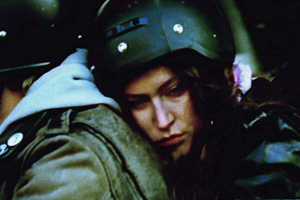 H2N: As for the film itself, you built it more organically from the idea of a character as opposed to having an A-Z script. When did you know that you had a feature? Was it in the editing even, or did you just keep shooting without any clear-cut agenda?
H2N: As for the film itself, you built it more organically from the idea of a character as opposed to having an A-Z script. When did you know that you had a feature? Was it in the editing even, or did you just keep shooting without any clear-cut agenda?
RRY: It was pretty early on that I decided to go for it and make it into a full-length film. I would say probably after the first two shoots. We had one shoot where we did the interview and then we had another shoot that was I think a three-day shoot. And then after that the outline became even more fleshed out and that’s when the outline really became produced and it was like, “Okay, now let’s plot the next shoot,” which was gonna be a week long. So there was a decision pretty early on when we decided to go through with it as a full-length film. But it was still constantly a call-and-response process. It was never like, “Okay, a full-length film, let’s just plan the whole shoot and do it.” So far the way the film had come into fruition and what we’d shot thus far, that was part of it in a way. The process of making it and then editing and seeing what I had was gonna be integral to what the movie was. As well as shooting in little chunks. I felt that was important. Because of the different formats and everything, it was like each time we approached with a new format it was a different shoot. We were taking a fresh look, in a way.
H2N: That ties into something else. I know you know your film and music and music and visual art history. Do you actively try to incorporate those influences or does that kind of reference subconsciously seep out?
RRY: I think it’s somewhere in between. I definitely have people that I’m watching when I’m making things that are directly inspiring me. And there’s also a canon that I just like that I’m watching all the time that’s inspiring. What was your question specifically again?
H2N: Well, with this film, which you’re building weekend-to-weekend and shoot-to-shoot, it doesn’t make it ten different movies in one, but the shoots become their own self-contained pieces. Not to mention the many formats employed. Were you breaking them down separately using different reference points?
RRY: For each format we would decide what the look is. Like, for the motorcycle areas we were looking at a Wong Kar Wai film where it was kind of a smeary fight scene, and so we were directly referencing that.
H2N: What stock did you use?
RRY: I don’t remember. It was expired, though. Expired Kodak stock.
H2N: Did you do more manipulation? It feels bleached out and grainier.
RRY: We did. My DP knows more about those details. At the time I knew but I don’t remember to be honest. We talked about it a lot. Part of the advantage of having it be expired is that we knew it was gonna look funky. And we weren’t sure, but a lot of that was also the color correcting, like we just tried to keep the blue in and keep it over exposed.
H2N: Is that slowed down? I feel like it was.
RRY: It’s a weird trick with frame rates.
H2N: In camera, though.
RRY: Yeah, we shot it like that so it would look like that. None of the speed is affected in post, actually. The 16mm stuff.
But, yeah, each look we came to with a certain aesthetic but then there’s an overall aesthetic of the film. I knew initially that I wanted it to have very dark colors and be eclectic but also have a strong, deep feeling and look to it. I feel like I’m not being very coherent, I’m kind of tired, I’m sorry.
H2N (laughs): Was it a conscious decision to show the Wall Street New York, that part of the city that people don’t usually see in New York movies?
RRY: Yeah. I felt like there’s definitely a lot of locations in New York that you end up seeing all the time and those are kinda boring. But the idea that Shelly specifically is living this isolated life, that she is disconnected from the world and that she could be in a place as populated as New York but also be this singular entity that slips through the cracks. So she would be somewhere like, New York! And it’s Wall Street! But it’s like, what the hell is this kid doing riding on a motorcycle through this city that’s so familiar but is as unknown to her as she is unknown to herself. In a sense, she is the quintessential New Yorker in some way and she’s also a metaphor for the city itself because she’s so public and yet so private, and so much in a popular environment but completely alone within that environment. I think a lot of New Yorkers are really lonely and really isolated and that’s why they live in New York, to feel part of something.
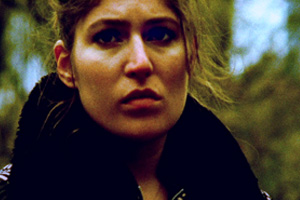 H2N: Was the idea born as any kind of reaction to seeing females so misrepresented on film? What provided that initial spark?
H2N: Was the idea born as any kind of reaction to seeing females so misrepresented on film? What provided that initial spark?
RRY: I think part of the spark for me was a reaction to Orphans and showing Orphans and making a film that was so rigid formally, and our process with making Orphans in terms of shooting for six weeks non-stop in this very bleak and minimal environment, and I almost wanted to make this movie in reaction to that. I knew that I wanted there to be a lot of people in it and I wanted the world to feel very modern and transient. With Orphans, and with Marion, I’ve always been interested in female characters and I wanted to create those that are truly fleshed out and that are as visceral and real as women really are in real life. Which isn’t something that I see that often in film. So that’s always been an interest of mine. But with You Won’t Miss Me I was wanting to create a really great character, but then I also wanted to create a rebel who was a modern, new kind of archetype. Someone who hadn’t been seen before but who was also a familiar type of hero that was an anti-hero at the same time. Someone who was complex and grandiose and larger than life, in some way. Like Indiana Jones is a character that we all know.
H2N (laughs): That’s what I thought a lot about in You Won’t Miss Me, was Indiana Jones.
RRY: Just like it! No, but in a way, there are those people. Ideally for me, when you’re watching a film you remember the person after the movie has ended, they stay with you and they linger, like Indiana Jones or something. I’m trying to think of a female equivalent. Linda Manz in Days of Heaven. She does that for me. So I wanted Shelly Brown, when Stella Schnabel and I were thinking about it together, we wanted Shelly Brown to be this character that would go down in history. That sounds like some big statement, but we did want this character to have that kind of impact and scope and importance and life to her.
H2N: For me, what makes it stick is the fact that she is in between. Where that character becomes memorable, and I don’t even have a comparison without digging too deep, is in that imbalance of, “Is she crazy? Is she not crazy?” Like, she’s not just some spoiled rich, bored person. She’s teetering. After the first time I saw it I was kind of hopeful, like “She’ll figure it out, she’ll be okay,” and then the more that I thought about it and seeing it again, I just didn’t know. What do you think about that? Did or do you play those games about “will Shelly be okay?”
RRY: I think that’s of course up to the viewer to decide. Who knows.
H2N: What’s the reaction you’ve gotten? Is the consensus closer to crazy or not so much?
RRY: I think it’s in between. And I think everybody’s in between, at least in their feelings. Right? I mean, everyone feels that ambiguity. That is reality.
H2N (laughs): But Shelly’s pretty amazingly in between!
RRY: Right, right.
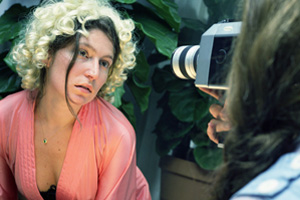 H2N: Did you know Stella had that in her? Have you known her for a long time?
H2N: Did you know Stella had that in her? Have you known her for a long time?
RRY: I’ve known her since she was a kid. My childhood best friend was her older sister. So I would always be around her house. And she was just my best friend’s younger sister so I didn’t really know her that well or hang out with her that much, but I knew her. So I felt close to her in the way that you do when you grow up with somebody. But she told me that she was acting after Orphans and she said she was taking classes and studying and she’d love to do something together. And I just thought she would be great on camera, I’d love to see what we could do. And I thought that both she and her sister were really talented and I want to work with talented, smart people. So then we made up the character together and the complexity was there from day one. It’s her performance. When we made up this fiction for this character she just brought an immense amount of reality and pathos and just direct soul. A friend of mine said her face is like a car wreck, and not in a bad way, but in the way that you can’t look away. You’re just drawn to it in that way. And I felt that way the first time I ever saw her on camera. Some people you start filming and they’re not as interesting and some you’re just like, “Whoa, holy shit, what’s going on there?” And that’s how I felt and that was the impetus to make the movie.
H2N: I know you talked about Wong Kar Wai as a specific reference but did you have a general, overall one you kept coming back to? Anything, even, like a painting or an album?
RRY: Someone said that the film was like Nan Goldin. Karina Longworth said that, actually. Not ‘someone,’ Karina Longworth! [both laugh] And it’s funny because my boyfriend works for Nan Goldin, which is really ironic and I’d never mentioned that to her. I just met Nan like three weeks ago, and it’s interesting because I do think there’s something there. I’d been looking at her work recently because he works for her and he also brings home a lot of films from her library and we watch them together. Just weirdo Swedish films. I mean, I can get you the names, but some that just blow my mind.
H2N: They’re on VHS or DVD?
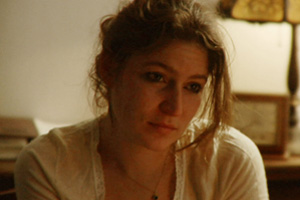 RRY: Both. It depends on what the movie is. What else? I knew that I wanted to adopt a lot of what I thought was going on with documentary in terms of the feeling of it being a thematically driven film, and that what you’re following is a thematic thing that’s taking you through all these different insights into something, like when you’re watching a documentary about The Weather Underground, for example, you’re using all these different formats and getting all this information in bits and pieces to understand a larger topic. So I was definitely pulling from that a bit. And then in specific scenes, Klute actually was a big movie for me. The shrink scene probably came from there.
RRY: Both. It depends on what the movie is. What else? I knew that I wanted to adopt a lot of what I thought was going on with documentary in terms of the feeling of it being a thematically driven film, and that what you’re following is a thematic thing that’s taking you through all these different insights into something, like when you’re watching a documentary about The Weather Underground, for example, you’re using all these different formats and getting all this information in bits and pieces to understand a larger topic. So I was definitely pulling from that a bit. And then in specific scenes, Klute actually was a big movie for me. The shrink scene probably came from there.
H2N: How long did you devote to that scene?
RRY: That was a one-day shoot. That’s all just one scene with a few takes. And we have the reverse angle and it just paled in comparison to her. Originally I was thinking we would have him, but once you’re on her, you can’t cut away.
It was actually more specifically scene motivated, each thing that I was pulling from. I think that’s part of the collage feeling, it’s not like, “I was watching a lot of” I don’t even know who. It wasn’t one influence. In a way, it was the diversity of influences, which was the influence. Specifically documentaries but also contemporary art, I think. A lot of work like Nan Goldin and photographs, like, I was even looking at stuff like Francesca Woodman and Diane Arbus at times. Just people who go into these different worlds and explore them and how to access an alternate space but in a way that feels like you are comfortable. Like you’re not an intruder, you’re actually in that interior world. And Nan was definitely one of the pioneers of that.
H2N: How about inspiration in a general sense, where does it come from for you?
RRY: I’m still trying to figure that out, honestly. A lot of it does come from looking at other people’s work and seeing what turns you on and what you get excited about. And I go through these periods where all of a sudden I’m looking at tons of work of a certain kind and I’m super excited about it and something clicks and something sparks. And then other periods where I’m not looking at as much work or I’m making something and it’s sort of oscillating between those two. Right now, more than anything I know I want to use alternative methods of filmmaking in terms of using something like the internet and possibly using a bunch of people/actors to then create the characters. I know how I want to work, in a way.
H2N: When it comes to writing, is it based on when you’re inspired or do you have like a daily routine?
RRY: That depends on what stage I’m at with it. I mean, if there’s work to be done then I’ll do it, then I’ll make myself do it. And if it’s junk then I’ll throw it out. I start a lot of things and then they don’t go anywhere, a lot of false starts. I’ve written half of like three movies. [both laugh] Maybe some day they will be made, or in some different incarnation, but it is still a trial and error of testing the waters. You never know until you get neck deep, and then you say, “Okay, is this really where I want to be or is this something else?” And that’s how the Stella project started.
H2N: How about budget or scope?
RRY: Well that’s kind of what I’m referring to, it’s funny that you’re asking that, because once I get that feeling and it locks in and I’m like, “Yes, full speed ahead,” I always wanna just go out and make it as soon as possible or begin making it however it needs to be made. The project dictates that. But I do want to make a movie for more money than You Won’t Miss Me. You Won’t Miss Me gave me the backpack that I now feel like I want to make a movie on a larger scale. And I’m not talking an insane scale, but definitely a movie that can reach more people in a budgetary sense. [both laugh] The budget does affect how many people you reach. And so I want to work on a level where I can reach more people and the story will follow suit and the making of the film will be conscious of that. It can’t not be. But that’s fine. That’s a good thing. That’s a new set of limitations that I’m looking forward to. I work well under limitations. I like being restricted, so then I can fit things to those restrictions.
H2N: One thing I was gonna ask, the hotel room fight, which is my instant classic scene of 2009. How did that scene develop? Was there rehearsal on that, or did you guys just get the room?
RRY: We had the room, ‘cause we had gone to Atlantic City to shoot The Virgins, and knew that we were gonna do that. But we shot that after the concert. The way that it rolls out in the film is pretty true to sequence. There was a lot of stopping and starting in that scene. The scene began, we knew they were gonna have a scene, the cinematographer was actually really tired and we had to beg her to shoot it. Rightfully so, it was like four in the morning when we shot that and it was really late and after that night of their show and that other previous hotel room scene. And so then we’re in there and we’re like, “Okay, we’re gonna shoot this scene, you guys are gonna get into an argument, blah-blah-blah, and then we started shooting. And then I’d yell cut and take Carlen (Altman) into the bathroom and I’d talk to her separately. By that time I had a very good sense of how Shelly was feeling and was gonna react in the scene, but Carlen was a little bit more freaked out. I think she was a little afraid of Shelly.
H2N [laughs]: Why would she be afraid of Shelly?
RRY: It was before any of this had happened, but she was afraid, she sensed it, there was that energy in the room, it was fraught with tension even before they started fighting. And so what I needed to do was break up that tension and give Carlen the confidence that yes, we are acting, yes, this is a scene, Stella knows it’s a scene, she’s playing a character, relax, and these are your lines. And so we’d have that in the bathroom and we’d talk about it, and then she’d go out there and we’d shoot more of the scene. ‘Cause there would be these stops in it, you could almost feel it in the editing, they’d have a rapid fire and then there would be a moment where it would be like, “What’s gonna happen next?” And those were the moments when I’d call cut and help motivate the scene to what would happen next. And usually Carlen wouldn’t have to say much, it was almost like baiting Shelly. And Stella was in on this but she wasn’t always in on it in a conscious way. She knew that I was baiting her, and she liked to be baited, ‘cause she knew that the character could take it. We both had the faith that the character would produce.
H2N: That also brings up the final confrontation with the director [Aaron Katz]. Watching that a second time, I felt like they were both kind of right. Most arguments in movies, you’re supposed to take a person’s side. But in that one, when she becomes defiant, it’s not like she’s becoming unhinged there, especially when she’s like, “I’m not angry.” Where do you stand on that?
RRY: I always try to empathize with both characters, I really do. I don’t think there’s a character in the movie that I don’t like. I like everyone in the movie. I think it’s a very legitimate confrontation that they have and I think that both characters are justified in what they’re saying to each other. I think it’s a great rapid fire. They were really rappin’ with each other in a clever way.
H2N: In a way that scene was its own acting exercise gone really, really right.
RRY: That was one of the later things that we shot. But he was supposed to be the voice of reason. The final director was gonna have something very legitimate to tell Shelly about the way that she exists. That was the catalyst for that scene and was what I knew I wanted from him. He was gonna tell her that she was in the in-between in a way that wasn’t healthy for her and wasn’t gonna help her life progress.
H2N: Poor, poor Shelly.
— Michael Tully









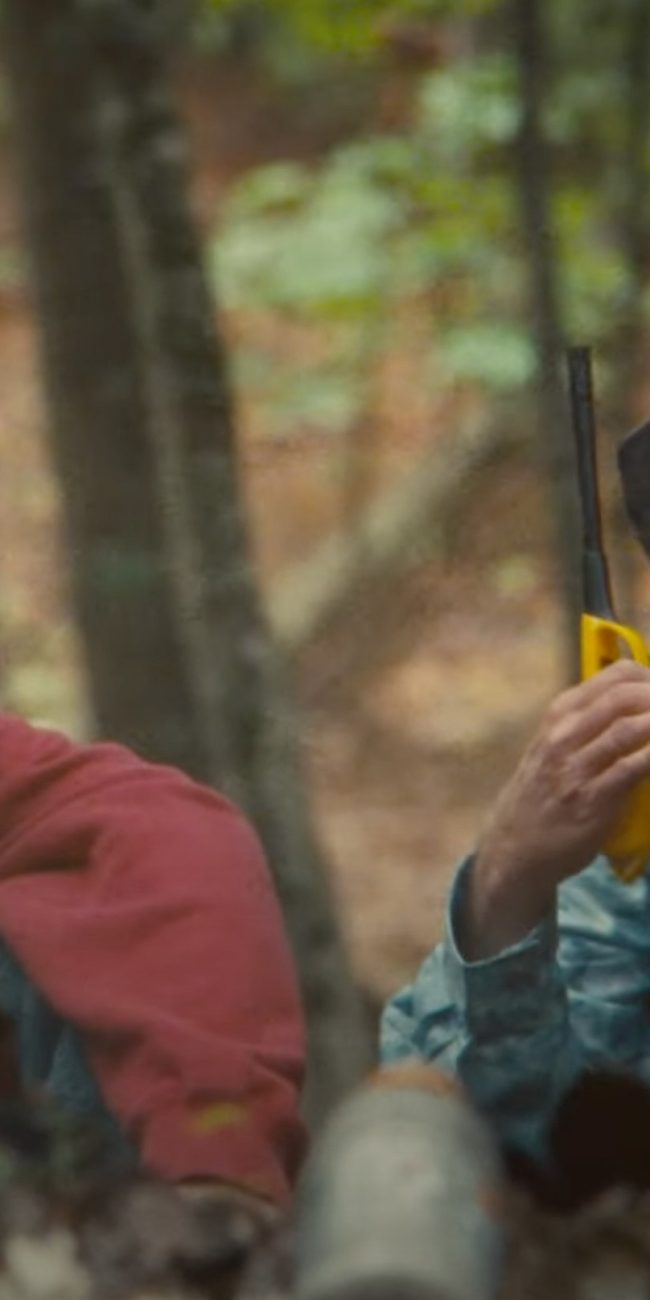
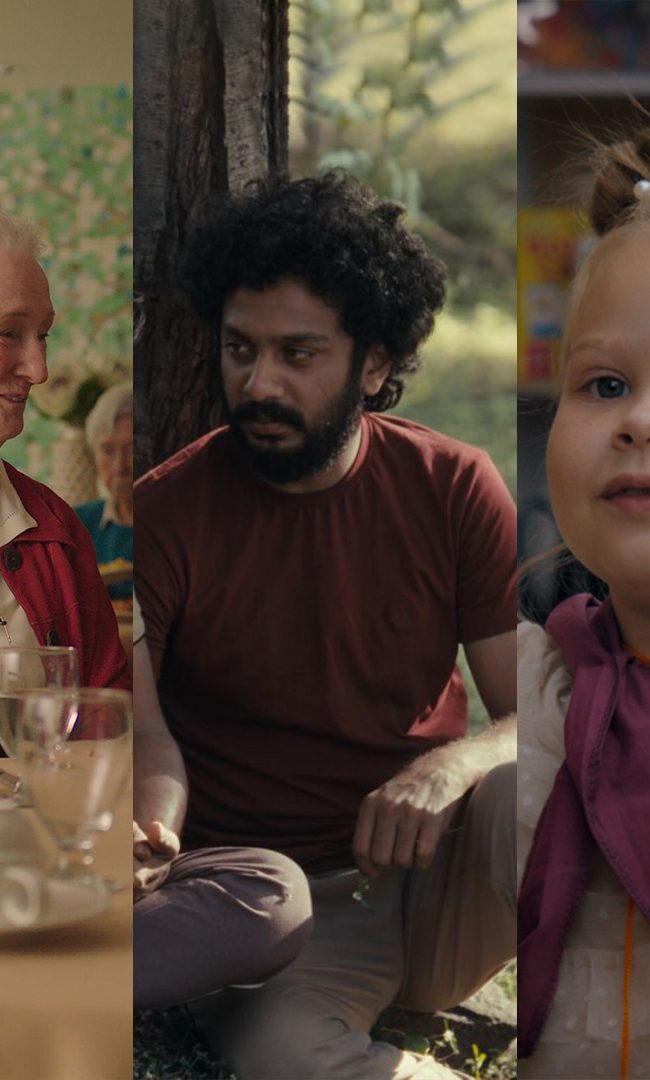


Pingback: HOME VIDEO PICKS – Hammer to Nail
Xmliqq2012
バーバリー
バーバリーマフラー
バーバリー財布
バーバリー アウトレット
バーバリーバッグ
ティンバーランド
ティンバーランド ブーツ
ティンバーランド 靴
ルブタン
クリスチャンルブタン
グッチ
グッチバッグ
グッチ 財布
ノースフェイス
ノースフェイスアウトレット
モンクレール
モンクレールアウトレット
モンクレールダウン
ティンバーランド
ティンバーランド ブーツ
ティンバーランド 靴